Newtown and Llanidloes, Montgomeryshire
Up to 1834
No information.
After 1834
Then Newtown and Llanidloes Poor Law Union was formed on 13th February, 1837. Its operation was overseen by an elected Board of Guardians, 21 in number, representing its 17 constituent parishes as listed below (figures in brackets indicate numbers of Guardians if more than one):
County of Montgomery: Bettws, Carno, Haberhavesp, Kerry, Llandinam, Llangirrig, Llanidloes (3), Llanlluchairn, Llanllugan, Llanwnog, Llanwyddelan, Manafon, Moughtrey Newtown (3), Penstrowed, Tref Eglwys, Tregynon.
The population falling within the union at the 1831 census had been 25,288 with parishes ranging in size from Penstrowed (population 123) to Newtown itself (4,550). The average annual poor-rate expenditure for the period 1834-36 had been £14,298 or 11s.4d. per head of the population.
A new union workhouse, designed by Thomas Penson of Oswestry, was erected in 1837-40 at Caersws, midway between the towns of Newtown and Llanidloes. The Poor Law Commissioners authorised an expenditure of £8,292 on construction of the building which was to accommodate 350 inmates.
Newtown was one of the areas of Wales that was strongly against the new workhouse system and in the late 1830s was home to a branch of the Chartist Movement whose demands included votes for all men and resistance to the 1834 Poor Law Act. The new workhouse became a particular focus of opposition. In May, 1838, some of the walls were knocked down by what were described as "idly and evil disposed persons". In December 1838, a detachment of the Montgomeryshire Volunteer Regiment was briefly stationed in a field next to the workhouse as a precaution against attack over the Christmas period.
Construction of the building was also delayed by a number of problems with the contractors. To save money, it was decided that bricks for the workhouse could be manufactured on side using brick-clay dug in the vicinity, for which William Bullock was appointed as contractor. However, the quantity and quality of these proved inadequate and in April, 1838, Bullock withdrew. There were also problems obtaining a sufficient supply of stone from Penstrowed Quarry. A further setback was caused when the sewer contractor, Edward Jones, absconded taking all his tools and equipment with him.
The workhouse building finally opened on 1st September, 1840, almost three years after construction work had begun. Its layout was based on the popular cruciform plan in which accommodation wings for different classes of workhouse inmate (male/female, infirm/able-bodied) radiated from a central supervisory hub to form a cross. Its location and layout are shown on the 1902 map below.
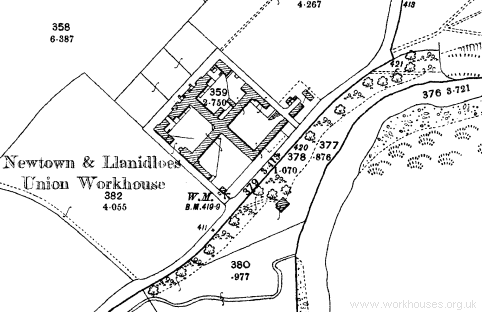
Newtown workhouse site, 1902.
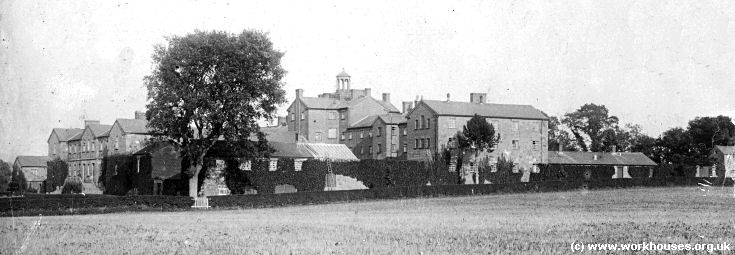
Newtown general view from the west, c.1911.
© Peter Higginbotham.
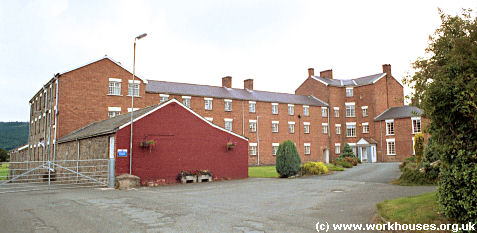
Newtown general view from the south, 2000.
© Peter Higginbotham.
The outer square perimeter of the workhouse was formed by a various service blocks such as the laundry and bakehouse, and by workshops in which the inmates laboured.
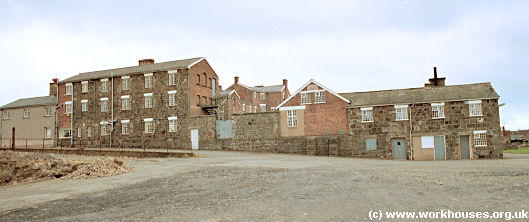
Newtown general view from the north-east, 2000.
© Peter Higginbotham.
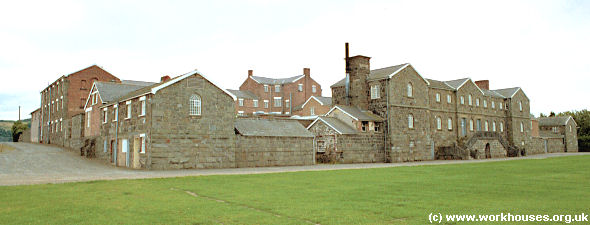
Newtown general view from the north, 2000.
© Peter Higginbotham.
Somewhat unusually, the workhouse entrance seems to have been at the back of the building, farthest from the road.
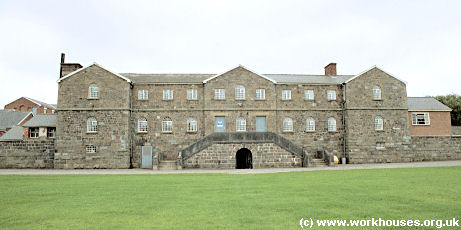
Newtown entrance, 2000.
© Peter Higginbotham.
After the closure of the workhouse, the site became the Llys Maldwyn Hospital. Initially it operated as a children's hospital and then more recently provided care for patients with learning difficulties. The hospital is understood to have closed in around 2000.
Staff
Inmates
Records
Note: many repositories impose a closure period of up to 100 years for records identifying individuals. Before travelling a long distance, always check that the records you want to consult will be available.
- Powys County Archives Office, Unit 29, Ddole Road Enterprise Park, Llandrindod, LD1 6DF. Holdings include: Guardians' minute books (1837-1903, 1919-30); Ledgers (1837-1930 with gaps); Admissions and discharges (1844-1944 with gaps); Creed registers (1861-1933); etc.
Bibliography
- The Newtown and Llanidloes Poor Law Union Workhouse, Caersws, 1837-1847 by B Owen (in Montgomeryshire Coll. 78, 1990)
- NEW! Workhouses of Wales and the Welsh Borders. The story of the workhouse across the whole of Wales and the border counties of Cheshire, Gloucestershire, Herefordshire and Shropshire. More...
Links
Unless otherwise indicated, this page () is copyright Peter Higginbotham. Contents may not be reproduced without permission.


